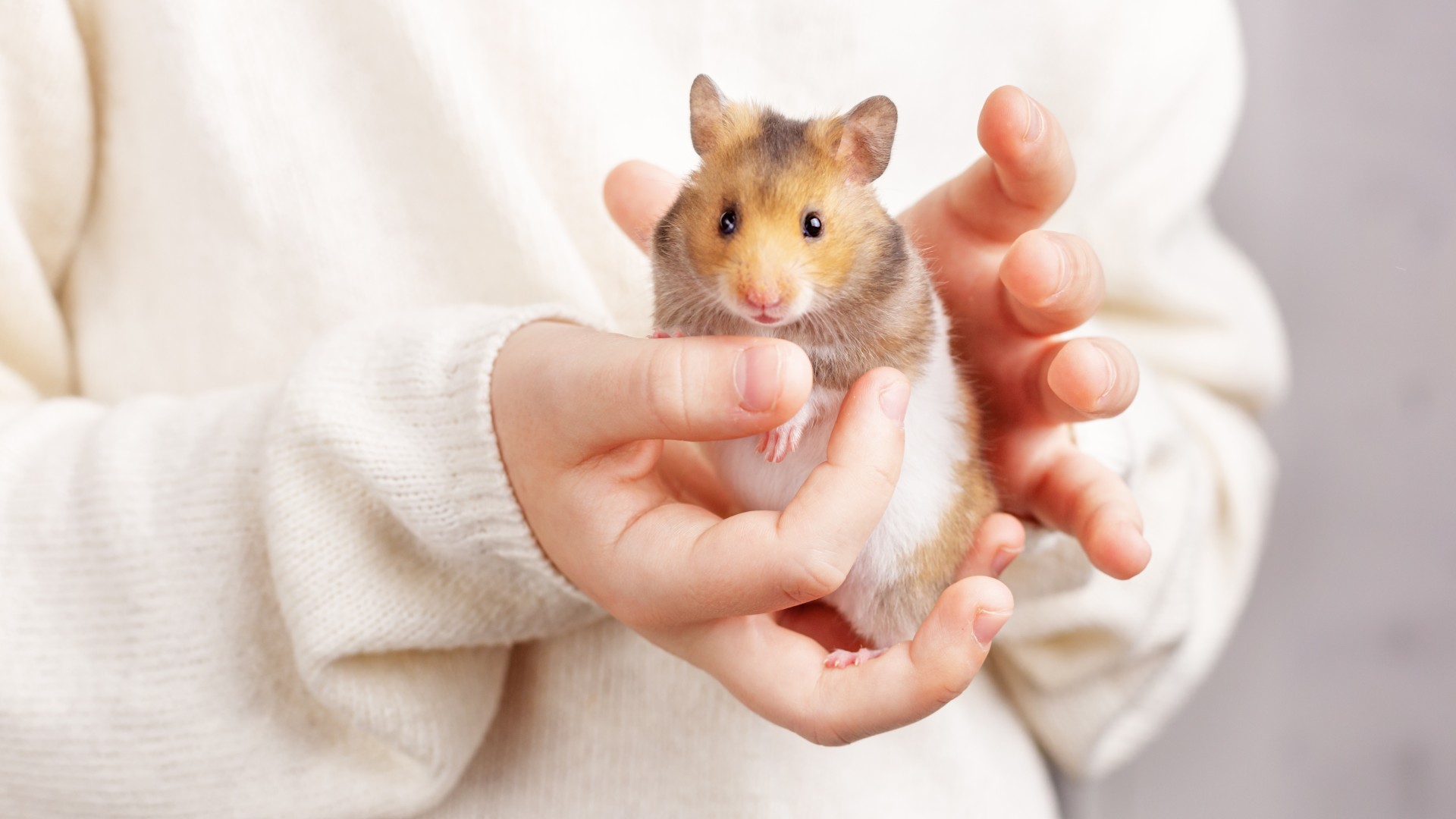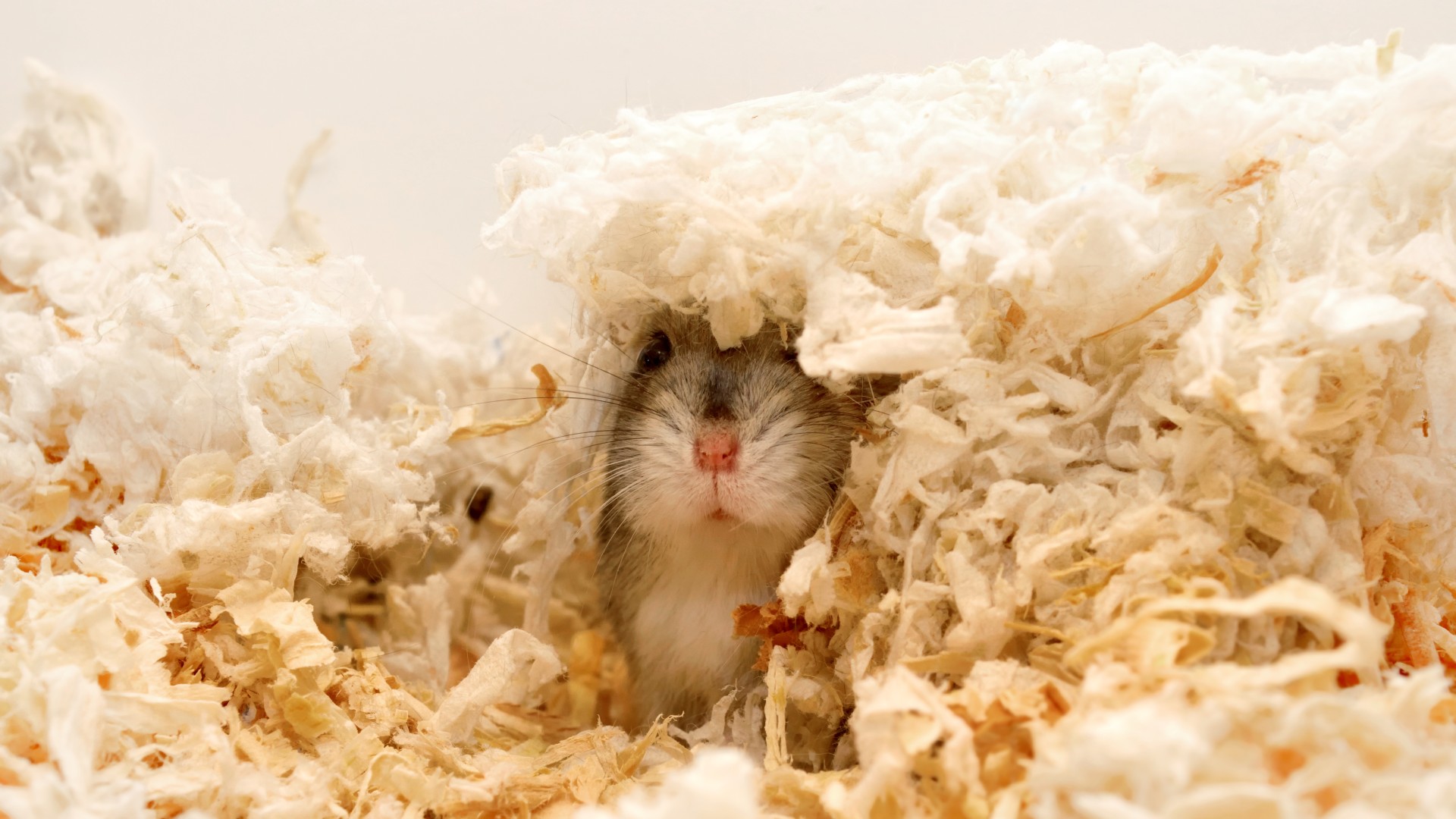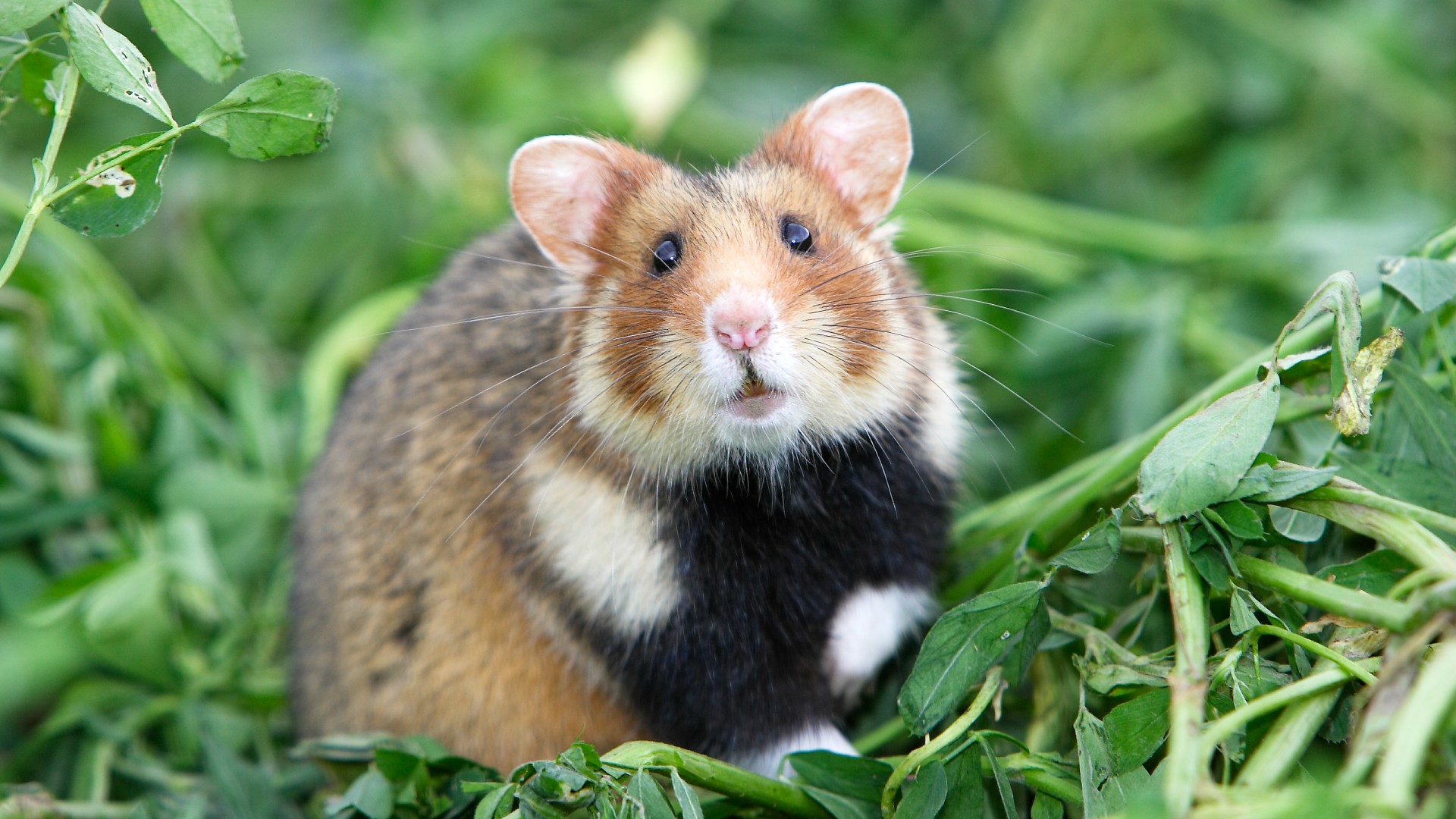5 reasons why your hamster is scared of you and how to gain their trust
From a new environment to feeling small in a big world, here are the most common reasons why your hamster is scared of you and how you can help them to trust

If your hamster is scared of you, it’s normal to feel disheartened - after all, you’ve likely put a lot of love and care into providing them with a wonderful home and having them act nervous or fearful around you would make any pet parent feel sad.
Even if you’ve invested in one of the best hamster cages and kitted it out with lots of wonderful accessories to make their habitat truly feel like a home, it’s worth keeping in mind that our little pocket pets tend to be scared of everything - you’d probably feel the same if you were in their tiny shoes and all your surroundings were supersized!
While building your hammy a wonderful home and furnishing it with plenty of the best hamster toys can go a long way to helping them settle into their environment and feel comfortable, sometimes your furry friend may still feel scared of you no matter how much love and attention you shower them with.
Thankfully, there’s good news. While there may be a number of reasons why your hamster is scared of you, there’s also plenty you can do to gain their trust and start to establish a connection. Below, we talk you through the most common of these reasons and give you some helpful tips and tricks to help the two of you develop an enduring bond.
How to tell if your hamster is scared of you
When you’re trying to figure out if your hammy is scared of you or whether there’s something else going on, observing their behavior and body language can help you to get clarity. Here are some common signs to look out for that indicate your hamster is feeling scared:
1. Hiding: If you notice your new pocket pet is hiding themselves away or your existing hammy has suddenly started exhibiting distancing behaviors at points of the day they wouldn’t normally do this (such as feeding time), it could be that something may be causing them to feel frightened. You might also question, do hamsters hibernate?
2. Biting: The question ‘why is my hamster biting me?’ is a common one amongst pet parents and there’s a fairly straightforward answer. Most small animals will attack when they feel threatened and biting is often their way of communicating that they want you to back off. A hammy, in particular, has continuously growing teeth and they’ll often use these as a way of defending themselves.
3. Acting skittish: A hamster who runs away when you come near their cage or try to touch them, is likely feeling scared and escaping is their way of protecting themselves.
Hiding, biting and acting skittish are three of the most common signs that your hamster is feeling scared. Once you’ve spotted any or all of the above, the next step is to figure out the reason that’s driving the behavior so that you can help make your hammy feel more comfortable.
Reasons why your hamster is scared of you

There tends to be five common reasons that can trigger fear in the heart of a hamster and understanding these can help you learn what you need to do in order to gain your hamster’s trust. Let’s take a look at each one:
1. They’re in a new environment
If you’ve just welcomed your furry friend into your family or you’ve recently moved yourself and your hammy into a new home, the change in environment can set off a stress response in your pocket pet that can leave them feeling nervous and scared.
When your hamster is in a new place, everything around them is different. They’re seeing, hearing and smelling new things and if you’ve just adopted your hammy, this could also be the first time they’re in a cage on their own without their littermates and parents.
The best thing you can do if your hammy is in a new environment is to give them time and space to adjust. Be patient as settling in is a process with some hamsters taking to their new surroundings immediately and others requiring days and even weeks to get comfortable.
For the first few days that your hamster is in a new environment, keep their cage covered with a light cloth and don’t try to touch them. Give them plenty of breathing room and let them get used to their new home at their own pace. Covering their cage will allow them to explore that environment without also having to deal with all that’s going on in the outside world.
2. You’re big and they’re small
Imagine that you’re Jack and you’ve just climbed the beanstalk to be met by a giant towering over you - life is a little bit like that for your hamster, with everything in their world feeling incredibly big which in turn, makes them feel incredibly small. And when we feel small, we also feel vulnerable.
It’s important to try and put yourself in your hammy’s tiny shoes and think about how you’d feel if this very loving but very large person started leaning over you cooing and trying to pet you - you’d probably freak out too, right?! The key to helping to make your pocket pet feel less afraid is to start slowly and exercise plenty of patience.
3. They’re feeling stressed
Just like us humans, stress can definitely send your hamster into a fear spiral that causes them to shut down. So, what constitutes a stress-triggering situation for your pocket pet, well, any of the following are likely culprits:
- A change in their immediate environment, such as a new cage or water bottle or being moved into a new room
- Having another pet in the house
- Suddenly having small children around
- Their daily routine being changed
- Being in a loud environment
- Moving the accessories in their cage around
- A cage that is too small
While some of these may sound minor, to your hamster, anything that upsets their routine or what they’re used to can be a major source of stress and anxiety. For more information on the signs of stress and what you can do, check out our guide on how to help a stressed hamster.
4. You’ve woken them up
If you’re anything like us, being woken from a deep sleep can leave you feeling like somewhat of a grumpy bear and for our hamsters, it’s no different, except that being woken can also trigger feelings of fear and disorientation that can cause them to bite.
5. Your hammy doesn't trust you yet
It’s going to take time for you and your pocket pet to build a relationship that has a solid foundation of trust and it’s perfectly normal that your hammy may take days or weeks before they feel fully comfortable with you. The good news is, there’s plenty you can do to help teach your hammy that you’re trustworthy.
How to gain your hamster’s trust

We recommend a slow and steady approach when it comes to gaining your hamster’s trust and patience and consistency are going to be key. The more you repeatedly behave in ways that meet your hammy’s needs, the more they’ll come to view you as safe, reliable, and trustworthy. Here are a few of our top tips to help make this process as smooth as possible:
1. Make sure they have a decent sized cage
We know, you’re probably wondering what on earth the size of your hammy’s cage has to do with gaining their trust, but it can actually make all the difference. When a hamster has plenty of room to roam about in, it makes them feel happy and when they’re happy, they’re prone to being friendlier and more trusting.
2. Give them time to adjust to their new surroundings
It’s really important that if you have a new hamster or you’ve recently relocated your hammy into a new home, that you give them time to get used to their new environment. While some hamsters will have no problem settling in right away, some take days or weeks to get comfortable after a move.
3. Establish a routine - and stick to it
Hamsters are a bit like children in that they do best when they have a consistent routine and know what to expect. Replenish their food and water and clean their cage at the same time each day as this eliminates the dreaded element of surprise, which our pocket pets don’t like.
4. Approach them slowly and build up contact over time
Our little furry friends don’t have the best eyesight, so the first thing you want to do is to avoid approaching them too quickly. It’s also a good idea to start slowly when it comes to contact, so if you’re really wanting to spend time with your hammy, pull up a chair beside their cage and just observe them.
After a few days, try placing a treat in your hands and lying your hand flat in their cage to see if you can entice them over. Just make sure to wash your hands thoroughly before and after! Your hamster might hop straight into your palm and eat the treat or she may sniff around a bit and then back off. Try moving the treat to the end of one of your fingers and see if that makes her feel more comfortable.
5. Never force your hamster to interact
The quickest way to break trust with your hammy is to try and force contact as this will definitely scare them off. Don’t grab your hamster or try to hold them in place so you can pet them. Instead, let your hammy come to you and respect that they will need to move at their own pace around this. Some hamsters sadly never feel comfortable getting too close, while with time, others will soon feel safe to let you hold them.
6. Don’t punish your hamster
Unlike our feline friends and canine companions who know when they’ve been a good or bad boy, our pocket pets have no understanding of these words or of punishment, so trying to use negative reinforcement to teach your hammy that behaviors like biting aren’t ok won’t work.
Instead, reinforce good behavior with treats and if your hammy engages in unwelcome behaviors, accept that they’re doing this out of fear and stress and leave them be. You can always try again tomorrow!
7. Provide them with plenty of enrichment
Learning how to set up a hamster cage will give you a head start on turning your hammy’s habitat into a true home. Hamsters love all kinds of enrichment activities, from running on their wheel to playing with toys, so try to provide them with lots of things that will stimulate them both physically and mentally.
You might also want to read: Why is my hamster sleeping in the corner of their cage?
PetsRadar Newsletter
Get the best advice, tips and top tech for your beloved Pets

Kathryn is a freelance writer who has been a member of the PetsRadar family since it launched in 2020. Highly experienced in her field, she's driven by a desire to provide pet parents with accurate, timely, and informative content that enables them to provide their fur friends with everything they need to thrive. Kathryn works closely with vets and trainers to ensure all articles offer the most up-to-date information across a range of pet-related fields, from insights into health and behavior issues to tips on products and training. When she’s not busy crafting the perfect sentence for her features, buying guides and news pieces, she can be found hanging out with her family (which includes one super sassy cat), drinking copious amounts of Jasmine tea and reading all the books.
